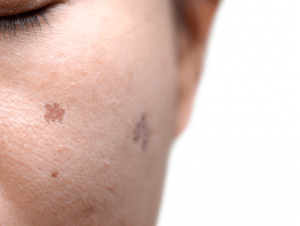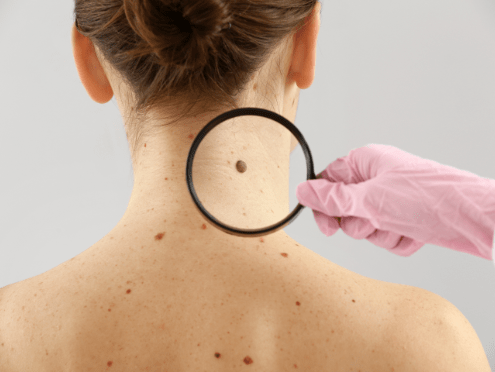
What Is Skin Cancer
Skin cancers develop when skin cells are damaged, usually by overexposure to ultraviolet radiation from the sun, and begin to grow abnormally and uncontrollably. If left untreated, skin cancer cells can spread to other parts of the body.
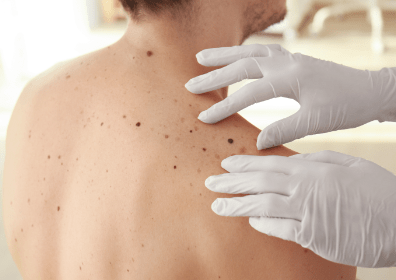
Melanoma
The most serious and dangerous form of skin cancer. Melanoma forms in the melanocytes cells of the skin, which are responsible for producing the pigment which gives skin its colour called melanin. While melanoma is the least common skin cancer, it grows much faster than other types and are more likely to spread to other parts of the body.
Melanoma may appear as a new or existing spot that changes in size, shape or colour over several weeks to months. They often have irregular edges, a flat or slightly raised surface, and multiple colours within one spot.
The earlier a melanoma is found, the more successful the treatment will be. Most melanoma are removed with a surgical excision.
The ABCDE of Melanoma: clues that could indicate your mole is actually a melanoma.
A – Asymmetry: one half of the mole does not match the other.
B – Border: the edges of the mole are irregular and uneven.
C – Colour: there are multiple colours or changing shades present.
D – Diameter: the mole is larger than 6mm in diameter.
E – Evolving: the mole has changed in size, shape, or colour.
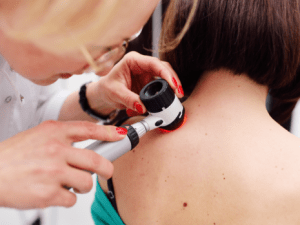
Basal Cell Carcinoma (BCC)
Basal cell carcinomas (BCCs) are the most common type of non-melanoma skin cancer, found in the basal cells of the lower epidermis. They grow slowly, and though it is rare that BCCs spread to other parts of the body, if left untreated they can spread deep into the skin and make future treatment more difficult. Those diagnosed with a BCC are more likely to develop new BCCs in different places later on in life.
BCCs are commonly found in areas of the body that have intense sun exposure such as the head, neck, and upper body. They can appear as a pearl or pale-red coloured lump, and/or a slightly scaly or shiny area. As it grows, a BCC can become inflamed, ulcerated, or even bleed; appearing like a sore that isn’t healing properly.
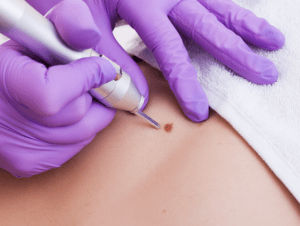
Squamous Cell Carcinoma (SCC)
Squamous cell carcinomas (SCCs) are a type of non-melanoma skin cancer, and begin in the squamous cells of the upper layer of the epidermis. SCCs can grow quickly over weeks or months and have a tendency to spread to other parts of the body, known as invasive SCCs. As they affect the top skin layers, early diagnosis and treatment means most SCCs can be removed easily and sometimes even without surgery.
SCCs are most found in areas that have consistent sun exposure such as the shoulders, hands, forearms, and legs. They can appear as thickened, scaly, or crusted spots, sometimes red or pale pink in colour, and/or a rapidly growing lump. SCCs can often bleed easily or be tender to touch.
Non-Cancerous Skin Spots
A lot of skin spots are not cancerous but can have the potential to develop into skin cancers. It is important to monitor these benign lesions closely, as changes or growth can indicate cancer cells beginning to develop.
Moles (called naevi) are normal and quite common skin features caused by melanocyte cells growing in groups. Having many moles can be genetic, but overexposure to the sun, especially in childhood, can also increase the number of moles on a person’s body. People with large numbers of naevi can have higher risks of skin cancer and melanoma.
Sunspots (known as actinic or solar keratosis) develop over many years and are typically seen in people over 40 years of age. Sunspots are a warning sign of excessive sun exposure, which can increase the risk of a person developing skin cancer.

